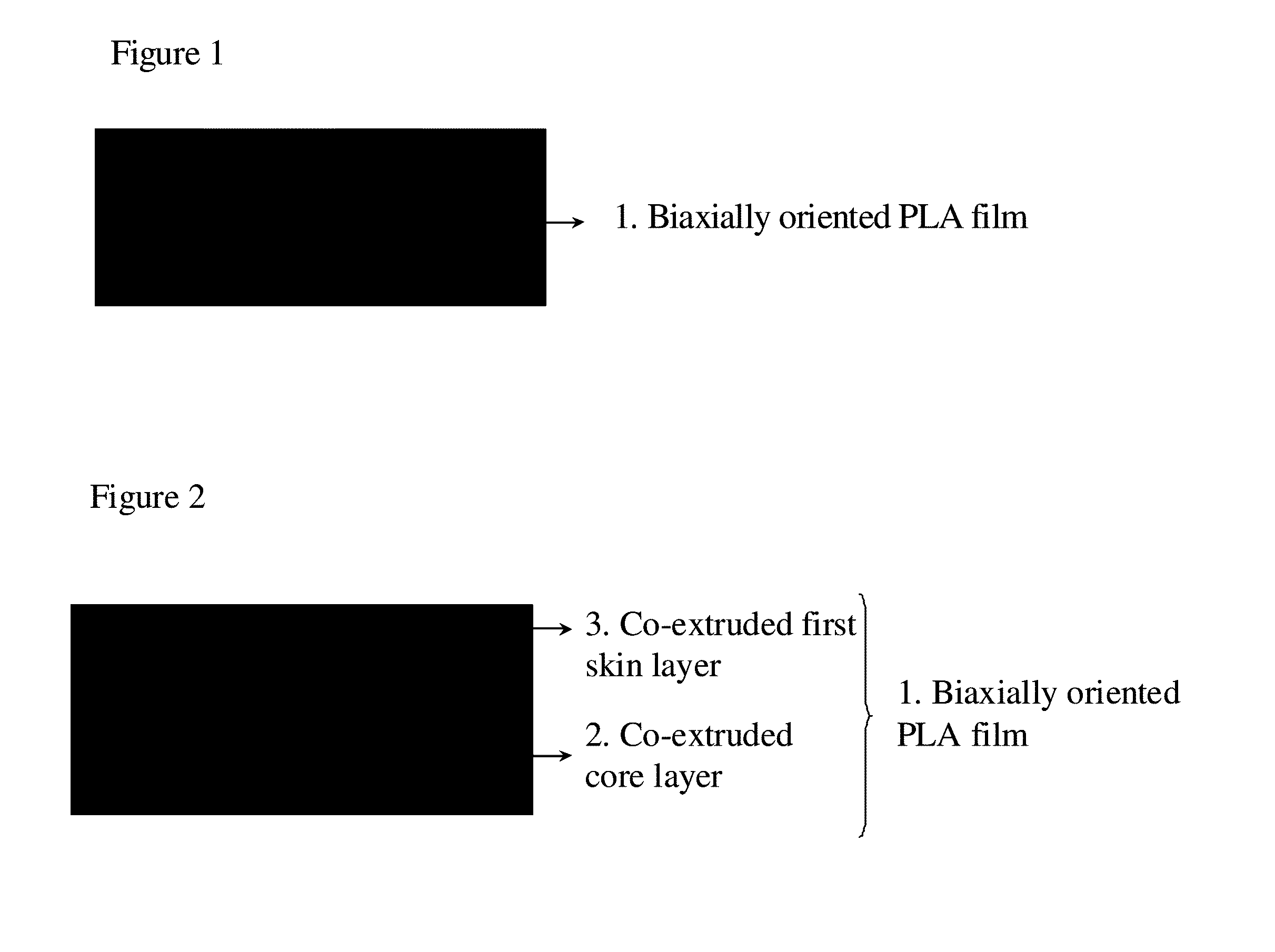Biaxially oriented polylactic acid film with reduced noise level and improved moisture barrier
a polylactic acid film, biaxial orientation technology, applied in the direction of packaging foodstuffs, instruments, packaged goods, etc., can solve the problems of increasing cost, affecting the quality of the product, and exhibiting a noise level of 90 db, so as to maintain the compostability and processability of the film, the noise level of the film is significantly reduced, and the noise level is higher.
- Summary
- Abstract
- Description
- Claims
- Application Information
AI Technical Summary
Benefits of technology
Problems solved by technology
Method used
Image
Examples
examples
[0087]This invention will be better understood with reference to the following examples, which are intended to illustrate specific embodiments within the overall scope of the invention. Depending on the actual formulations used for the respective layers, optimization of the processing temperatures described below were done to improve various aspects of the film such as film flatness profile, operability, reduced sticking marks, haze, etc. which should be familiar to those skilled in the art.
Test Methods:
[0088]The various properties and qualities in the Examples were measured by the following methods:
[0089]Glass transition temperature (Tg): The glass transition temperature (Tg) and melting temperature (Tm) of a resin were measured by using a TA Instruments QA-100 differential scanning calorimeter at a heating rate of 10° C. / min. substantially in accordance with ASTM D3418. The scanning cycles consist of heating from room temperature to 230° C. at 10° C. / min rate and cooling from 230°...
PUM
| Property | Measurement | Unit |
|---|---|---|
| thickness | aaaaa | aaaaa |
| thickness | aaaaa | aaaaa |
| glass transition temperature Tg | aaaaa | aaaaa |
Abstract
Description
Claims
Application Information
 Login to View More
Login to View More - R&D
- Intellectual Property
- Life Sciences
- Materials
- Tech Scout
- Unparalleled Data Quality
- Higher Quality Content
- 60% Fewer Hallucinations
Browse by: Latest US Patents, China's latest patents, Technical Efficacy Thesaurus, Application Domain, Technology Topic, Popular Technical Reports.
© 2025 PatSnap. All rights reserved.Legal|Privacy policy|Modern Slavery Act Transparency Statement|Sitemap|About US| Contact US: help@patsnap.com



